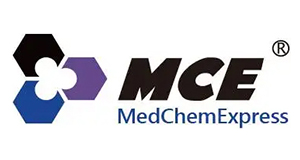Diphenidol-d10 (hydrochloride)
Diphenidol-d10 (hydrochloride)
SKU
MEXHY-A0082S-0
Packaging Unit
Get quote
Manufacturer
MedChemExpress
Availability:
loading...
Price is loading...
Product Description: Diphenidol-d10 (hydrochloride) (Difenidol hydrochloride-d10) is deuterium labeled Diphenidol (hydrochloride). Diphenidol hydrochloride (Difenidol hydrochloride) is a non-selective muscarinic M1-M4 receptor antagonist, has anti-arrhythmic activity. Diphenidol hydrochloride is also a potent non-specific blocker of voltage-gated ion channels (Na+, K+, and Ca2+) in neuronal cells. Diphenidol hydrochloride can be used in the study of antivertigo and antinausea[1][2][3][4][5].
Applications: Neuroscience-Neuromodulation
Formula: C21H18D10ClNO
References: [1]Russak EM, et al. Impact of Deuterium Substitution on the Pharmacokinetics of Pharmaceuticals. Ann Pharmacother. 2019;53(2):211-216./[2]Leung YM, et al. Inhibition of voltage-gated K+ channels and Ca2+ channels by diphenidol. Pharmacol Rep. 2012;64(3):739-44./[3]Leung YM, et al. Diphenidol inhibited sodium currents and produced spinal anesthesia. Neuropharmacology. 2010 Jun;58(7):1147-52./[4]Leung YM, et al. Diphenidol inhibited sodium currents and produced spinal anesthesia. Neuropharmacology. 2010 Jun;58(7):1147-52./[5]Chen YW, et al. Systemic diphenidol reduces neuropathic allodynia and TNF-alpha overexpression in rats after chronic constriction injury. Neurosci Lett. 2013 Sep 27;552:62-5./[6]Takeda N, et al. Neuropharmacological mechanisms of emesis. I. Effects of antiemetic drugs on motion- and apomorphine-induced pica in rats. Methods Find Exp Clin Pharmacol. 1995 Nov;17(9):589-90.
Molecular Weight: 355.97
Research Area: Neurological Disease
Target: Isotope-Labeled Compounds;mAChR;Sodium Channel
Applications: Neuroscience-Neuromodulation
Formula: C21H18D10ClNO
References: [1]Russak EM, et al. Impact of Deuterium Substitution on the Pharmacokinetics of Pharmaceuticals. Ann Pharmacother. 2019;53(2):211-216./[2]Leung YM, et al. Inhibition of voltage-gated K+ channels and Ca2+ channels by diphenidol. Pharmacol Rep. 2012;64(3):739-44./[3]Leung YM, et al. Diphenidol inhibited sodium currents and produced spinal anesthesia. Neuropharmacology. 2010 Jun;58(7):1147-52./[4]Leung YM, et al. Diphenidol inhibited sodium currents and produced spinal anesthesia. Neuropharmacology. 2010 Jun;58(7):1147-52./[5]Chen YW, et al. Systemic diphenidol reduces neuropathic allodynia and TNF-alpha overexpression in rats after chronic constriction injury. Neurosci Lett. 2013 Sep 27;552:62-5./[6]Takeda N, et al. Neuropharmacological mechanisms of emesis. I. Effects of antiemetic drugs on motion- and apomorphine-induced pica in rats. Methods Find Exp Clin Pharmacol. 1995 Nov;17(9):589-90.
Molecular Weight: 355.97
Research Area: Neurological Disease
Target: Isotope-Labeled Compounds;mAChR;Sodium Channel
| SKU | MEXHY-A0082S-0 |
|---|---|
| Manufacturer | MedChemExpress |
| Manufacturer SKU | HY-A0082S-0 |
| Package Unit | Get quote |
| Quantity Unit | STK |
| Product information (PDF) |
|
| MSDS (PDF) |
|

 Deutsch
Deutsch







